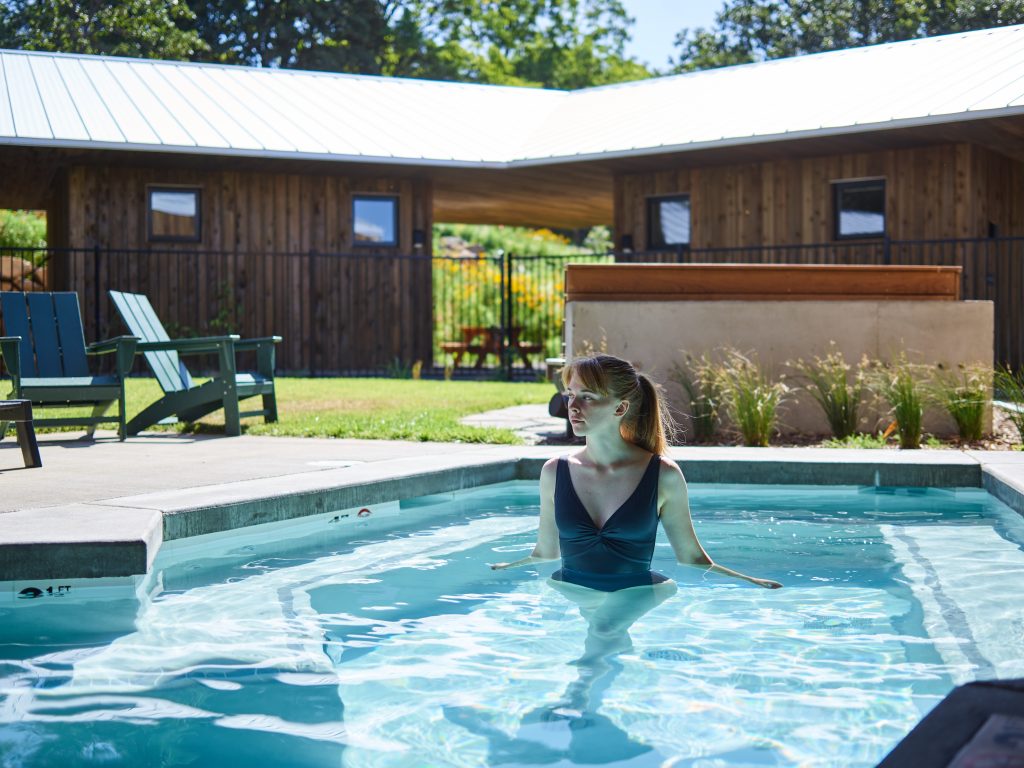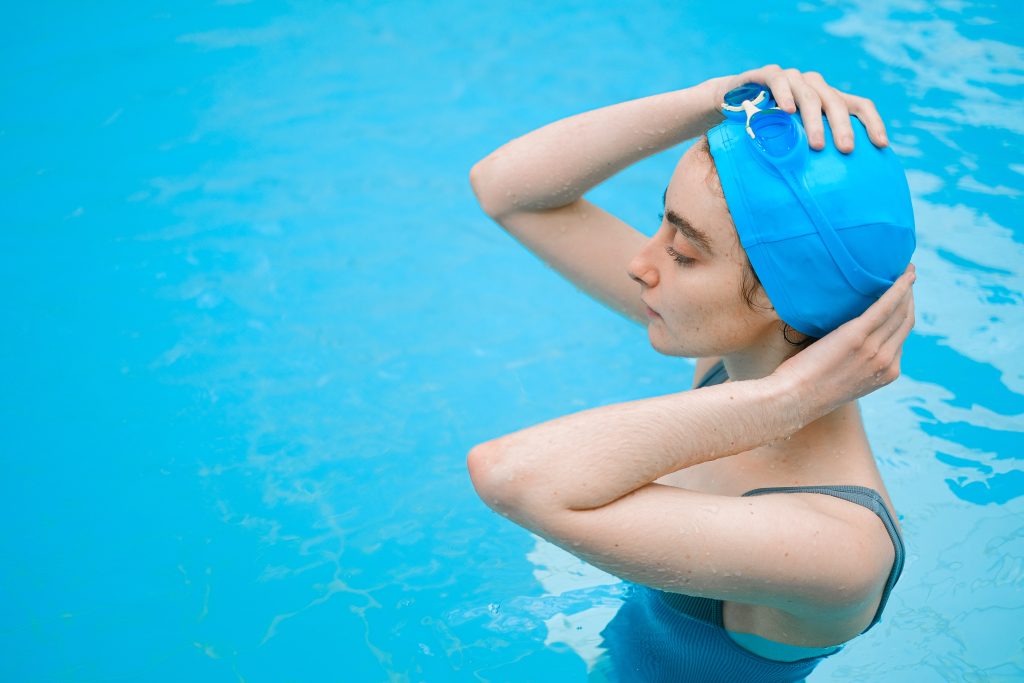Discover the fascinating relationship between water temperature and the effectiveness of aquatic therapy.
How Does Water Temperature Impact the Benefits of Aquatic Therapy?

Aquatic therapy, also known as water therapy or hydrotherapy, has gained popularity in recent years for its numerous health benefits. By utilizing the buoyancy and resistance properties of water, aquatic therapy offers a unique and effective way to improve physical and mental well-being. However, one crucial factor that significantly impacts the effectiveness of aquatic therapy is none other than water temperature.
Understanding Aquatic Therapy
Aquatic therapy refers to a range of exercises and treatments performed in water under the guidance of a trained therapist. The buoyancy of water reduces the amount of pressure on the joints, making it an ideal environment for individuals with various medical conditions or injuries.
One of the key advantages of aquatic therapy is the reduced impact on the body compared to traditional land-based exercises. The water provides support and reduces stress on the joints, allowing a greater range of motion and flexibility. Furthermore, the resistance provided by water helps in building strength and improving cardiovascular health.
Aquatic therapy sessions are not limited to individuals with injuries or medical conditions. They can also be an excellent option for those looking to improve fitness levels or seeking a fun and unique way to exercise.
The Basics of Aquatic Therapy
In aquatic therapy sessions, therapists use various techniques such as stretching, floating, and water aerobics to target specific areas of the body and address different health concerns. These sessions can take place in pools or specialized hydrotherapy facilities.
During a typical aquatic therapy session, the therapist may start with gentle warm-up exercises to prepare the body for more intense movements. These warm-up exercises can include walking or jogging in the water, gentle stretching, and range of motion exercises.
Once the body is warmed up, the therapist may guide the individual through a series of exercises that focus on strengthening specific muscle groups. These exercises can include leg kicks, arm movements, and core exercises that engage the abdominal muscles.
Water aerobics is another popular component of aquatic therapy. It involves performing aerobic exercises in the water, such as jumping jacks, leg lifts, and jogging in place. The resistance provided by the water adds an extra challenge to these exercises, helping to improve cardiovascular fitness.
Key Benefits of Aquatic Therapy
Aquatic therapy offers a myriad of benefits for both the body and mind. Regular sessions can help improve muscle strength, flexibility, and endurance. Additionally, the supportive nature of water allows individuals to perform exercises that may be challenging or impossible on land.
For individuals with arthritis, aquatic therapy can be particularly beneficial. The warm water helps to soothe joint pain and stiffness, while the buoyancy reduces the pressure on the joints, making movement easier and more comfortable.
Post-surgical recovery can also be aided by aquatic therapy. The water provides a safe and supportive environment for individuals to regain strength and mobility after surgery. The resistance of the water helps to rebuild muscle strength without putting excessive strain on healing incisions.
Neurological disorders, such as multiple sclerosis or Parkinson’s disease, can also benefit from aquatic therapy. The buoyancy of water reduces gravitational forces, which in turn decreases joint stress, eases pain, and improves mobility. Water-based exercises can help individuals with neurological conditions improve balance, coordination, and overall physical function.
On the mental health front, aquatic therapy has been shown to reduce stress levels, promote relaxation, and improve overall mood and well-being. The soothing properties of water create an environment conducive to stress relief and the release of feel-good endorphins. Additionally, the social aspect of aquatic therapy can provide a sense of community and support, further enhancing mental well-being.
In conclusion, aquatic therapy is a versatile and effective form of rehabilitation and exercise. Whether you are recovering from an injury, managing a chronic condition, or simply looking for a unique and enjoyable way to stay fit, aquatic therapy can offer numerous benefits for both the body and mind.
The Role of Water Temperature in Aquatic Therapy
Water temperature plays a significant role in the effectiveness and outcomes of aquatic therapy. The temperature can impact the body’s response to treatment, as well as the safety and comfort of the individual undergoing therapy.
The Science Behind Water Temperature and Therapy
The human body reacts differently to variations in water temperature. Warm water therapy, typically between 88°F to 94°F (31°C to 34°C), promotes relaxation and increases blood flow to the muscles. This can aid in reducing muscle tension, increasing flexibility, and enhancing overall healing.
When immersed in warm water, the body’s blood vessels dilate, allowing for improved circulation. This increased blood flow delivers oxygen and nutrients to the muscles, promoting faster recovery and reducing the risk of muscle soreness. Additionally, the warmth of the water helps to soothe aching muscles and joints, providing a sense of comfort and relaxation.
On the other hand, cold water therapy, ranging from 50°F to 72°F (10°C to 22°C), is commonly used to reduce inflammation and swelling. Cold water constricts blood vessels, which can help minimize tissue damage and provide pain relief.
When exposed to cold water, the body’s blood vessels constrict, reducing blood flow to the affected area. This constriction helps to decrease inflammation and swelling, providing relief from pain and discomfort. Cold water therapy is often utilized in the early stages of injury recovery, as it helps to control swelling and promote healing.
Therapists carefully consider these temperature ranges to ensure the desired therapeutic effects are achieved while keeping the client comfortable and safe during their aquatic therapy sessions.
Optimal Water Temperatures for Different Therapies
While there are general guidelines for water temperature, optimal ranges may vary depending on the individual’s condition, therapy goals, and therapist recommendations. For individuals seeking relaxation and stress reduction, warm water therapy is often preferred, with temperatures ranging from 92°F to 96°F (33°C to 35°C).
Warm water therapy creates a soothing environment that promotes relaxation and stress relief. The higher temperature helps to calm the nervous system, allowing individuals to unwind and experience a sense of tranquility. This therapy is particularly beneficial for individuals with anxiety, chronic pain, or high levels of stress.
For individuals recovering from injuries or seeking pain relief, both warm and cold water therapy may be used. In such cases, therapists may adjust the water temperature based on the stage of recovery and specific needs of the individual.
During the initial stages of injury recovery, cold water therapy is often recommended to reduce swelling and inflammation. As the healing progresses and the swelling subsides, warm water therapy may be introduced to promote muscle relaxation and flexibility. This combination of warm and cold water therapy can accelerate the healing process and help individuals regain their mobility and strength.
Ultimately, the therapist’s expertise and understanding of the individual’s condition play a crucial role in determining the most suitable water temperature for therapy. By carefully assessing the individual’s needs and goals, therapists can create a customized treatment plan that optimizes the benefits of aquatic therapy.
Impacts of Water Temperature on Physical Health
The temperature of the water used in aquatic therapy sessions can have significant effects on the body’s physical health, including muscle recovery, flexibility, and circulation.
Effects on Muscle Recovery and Flexibility
Warm water therapy can enhance muscle recovery by increasing blood circulation and promoting the loosening of tight muscles. The warmth of the water helps relax muscle tissue, reducing muscle spasms and improving flexibility.
Cold water therapy, on the other hand, can help reduce inflammation and swelling in injured or overworked muscles. The cooling effect of cold water constricts blood vessels, which reduces fluid buildup and supports the healing process.
Depending on the specific goals of the therapy session, therapists may choose to incorporate warm or cold water based on their assessment of the individual’s condition.
Influence on Circulation and Heart Health
Water temperature also affects circulation and heart health during aquatic therapy sessions. Warm water therapy promotes vasodilation, which widens blood vessels and improves blood flow. This increased circulation can enhance cardiovascular health and provide a gentle cardiovascular workout.
Cold water therapy, on the other hand, causes vasoconstriction, which temporarily narrows blood vessels. This can help reduce blood flow and inflammation in areas of acute injury or to manage certain conditions. It is worth noting that cold water therapy should only be used under the supervision of a qualified therapist.
Impacts of Water Temperature on Mental Health
The influence of water temperature isn’t limited to physical health alone. The temperature of the water used in aquatic therapy sessions also plays a role in promoting mental well-being.
Stress Reduction and Relaxation Benefits
Warm water therapy has soothing and relaxing effects on the body and mind. Spending time in warm water can help reduce stress levels, relieve anxiety, and promote a sense of calm. The gentle support provided by the water can create a tranquil environment ideal for relaxation and contemplation.
Cold water therapy, while less commonly associated with relaxation, can still provide unique benefits. The invigorating nature of cold water can help uplift mood, increase alertness, and provide a refreshing experience.
Impact on Sleep Quality and Mood
Both warm and cold water therapies have the potential to positively impact sleep quality and overall mood. Warm water therapy before bedtime can help relax the body and mind, leading to a more restful sleep. The release of endorphins during aquatic therapy can also contribute to an improved mood and a sense of well-being.
Conversely, cold water therapy may invigorate the body and provide an energizing effect. For individuals struggling with low energy or mood, a brief exposure to cold water can provide a natural pick-me-up.
Safety Considerations in Aquatic Therapy
While aquatic therapy can be incredibly beneficial, it is essential to prioritize safety, especially when it comes to water temperature.

Risks of Too High or Low Water Temperatures
Both excessively high and low water temperatures can pose risks to individuals during aquatic therapy. Extremely high water temperatures can lead to overheating, dehydration, and heat exhaustion. Conversely, water that is too cold can cause hypothermia, resulting in lowered body temperature and increased strain on the cardiovascular system.
Therapists carefully monitor water temperatures and consider the individual’s health and comfort to maintain a safe and enjoyable therapy experience.
Best Practices for Safe Aquatic Therapy
To ensure a safe aquatic therapy session, it is important to follow best practices. These include working with a qualified therapist who can tailor the therapy to individual needs, maintaining proper hydration, and acclimating gradually to the water temperature.
Individuals should communicate any discomfort or concerns to their therapist, who can then make appropriate adjustments to water temperature and therapy techniques.
Overall, water temperature is a critical factor in optimizing the benefits of aquatic therapy. By understanding its impact on physical and mental health, individuals can make informed choices and work closely with their therapists to maximize the effectiveness and enjoyment of their aquatic therapy sessions.



